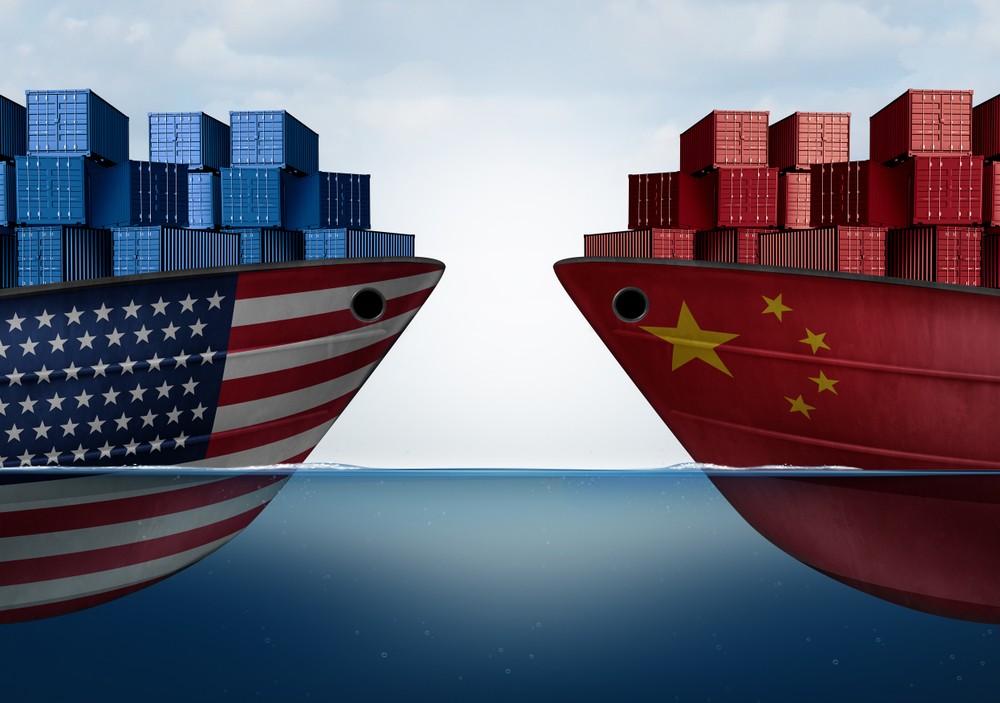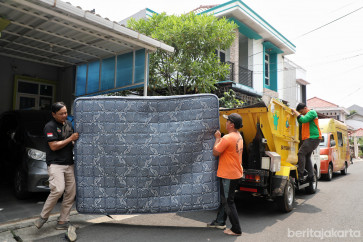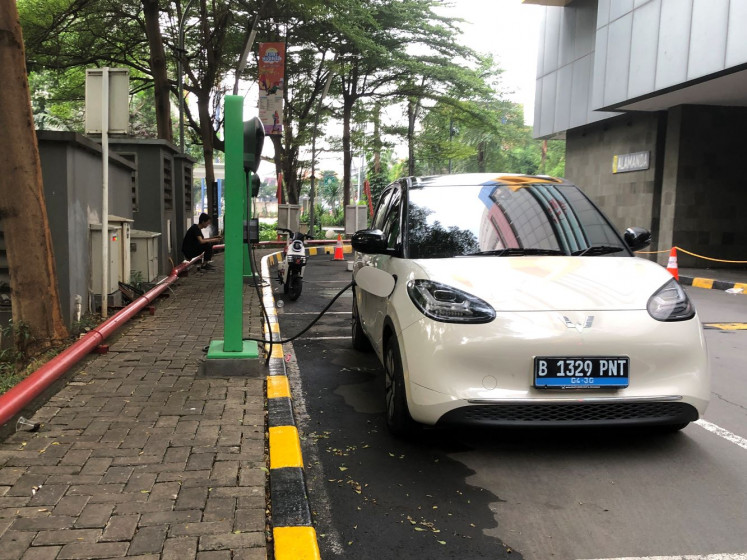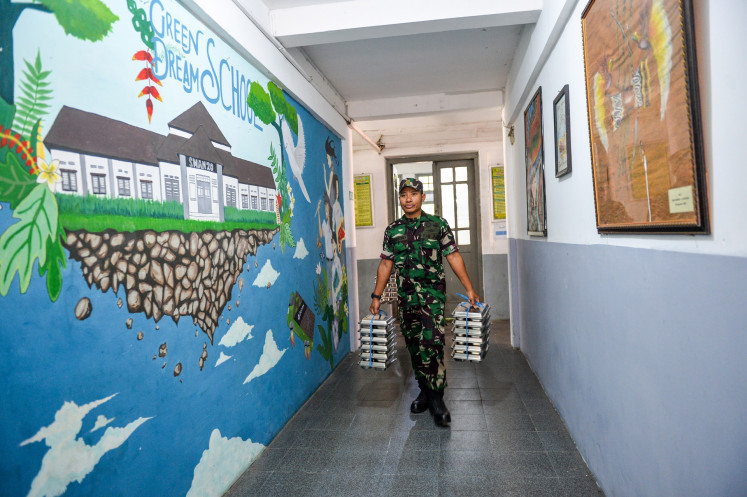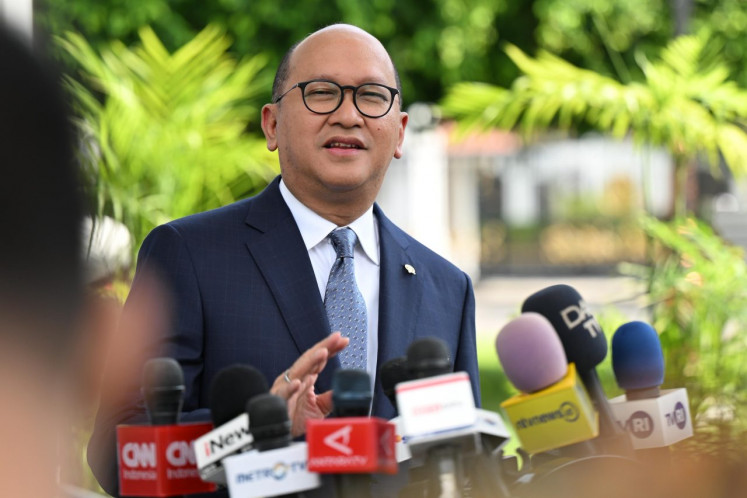Popular Reads
Top Results
Can't find what you're looking for?
View all search resultsPopular Reads
Top Results
Can't find what you're looking for?
View all search resultsASEAN can stop Indo-Pacific from becoming US-China ‘theater’
Change text size
Gift Premium Articles
to Anyone
A
“cold war” between the United States and China is looking more and more inevitable, and the Indo-Pacific region could well turn into the main theater where the emerging contest between the two superpowers will be played out.
While attention has focused mainly on the tariff wars between the two largest economies in the world, the two countries are slowly — if not quietly — building their military presence and widening their spheres of influence through the Indian and Pacific oceans.
As might be expected, China is doing this more subtly by channeling massive infrastructure investment into dozens of countries through its Belt and Road Initiative (BRI). The port developments in the Indian Ocean and structural developments on the disputed Spratly Islands in the South China Sea are the clearest indication of China’s intention to build its maritime strength. The BRI also stretches aggressively into the West Pacific.
The US, on the other hand, is doing it more openly by building alliances to contain Chinese expansion and by pushing its concept of a US-led regional architecture for the Indo-Pacific.
US Vice President Mike Pence revealed this latest maneuver last week by announcing that the US would build a naval base in Papua New Guinea. Speaking on the sidelines of the APEC Summit in Port Moresby, Pence said that the US would partner with Australia in developing the Lombrum naval base on Manus Island “to protect sovereignty and maritime rights in the Pacific islands”.
Indonesia and the other member states of ASEAN have the misfortune of being right in the middle of this “new cold war”, as the region straddles the two oceans. The 10-member ASEAN will have to muster all its diplomatic skills to ensure that the region is spared the impacts of the emerging contest between the two behemoths.
On this, ASEAN has an effective instrument at its disposal that helped it survive the Cold War between the US and the Soviet Union: the Zone of Peace, Freedom and Neutrality (ZOPFAN) agreement, which the grouping’s five original members — Indonesia, Malaysia, the Philippines, Singapore and Thailand — hammered out and signed in Kuala Lumpur in 1971. The others that joined ASEAN later — Brunei, Myanmar and the three communist states Cambodia, Laos and Vietnam — acceded to the agreement automatically.
ZOPFAN has since been buried in the deepening tureen of alphabet soup that ASEAN is famous for; so much so that its relevance has been grossly underestimated. One really needs to look at the region before ASEAN came into being in 1967 to be reminded that this was once a Cold War theater of the West and the Communist bloc.
ZOPFAN not only helped guide the region in sailing through the turbulent waters of that era, but it also became the main reference for future treaties and agreements to promote regional security and stability, including the 1976 Treaty of Amity and Cooperation (TAC) signed in Bangkok and the 1995 Southeast Asia Nuclear-Weapon Free Zone (SEA-NWFZ) treaty, also signed in Bangkok.
ASEAN diplomacy ensured that the TAC peace instrument bore the signatures of more than 30 countries, including China in 2003 and the US in 2009.
One of the points in ZOPFAN was phasing out foreign military bases in the region, in particular the US’ Subic and Clarke bases in the Philippines, and the Cam Ranh base in Vietnam that hosted the Soviet fleet. Admittedly, it took many years after the signing before the closure of these foreign bases.
ZOPFAN does not extend beyond Southeast Asian borders, so ASEAN has no say in Papua New Guinea’s decision to invite the US to develop Lumbrum base, just as it had no say when Australia offered Darwin in 2011 to host a US military base.
The growing build-up of strongholds — the US bases in Darwin and eventually Papua New Guinea, and the Chinese construction on the Spratly Islands — are right at ASEAN’s back door and too close for comfort. ASEAN needs to respond not only to secure its own borders, but also to ensure peace and stability in the entire Indo-Pacific region.
It already has several initiatives on the table, including ongoing negotiations with China on a code of conduct for dealing with territorial disputes in the South China Sea, and the Indonesian initiative for a more inclusive Indo-Pacific regional architecture that involves China — compared to the more exclusive American concept. And there is the longstanding Indonesian proposal for an Indo-Pacific treaty of amity and cooperation.
No one can accuse ASEAN of a shortage of initiatives. But recent regional developments call for a more rigorous ASEAN approach to diplomacy.

